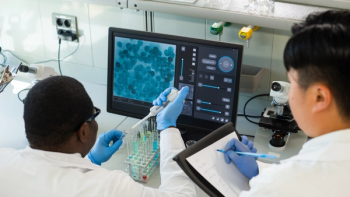
- Pharmaceutical Executive-01-01-2022
- Volume 42
- Issue 1
China Invests in Building Biotech
Government-led programs aim to attract scientists and offer resources to growing industry.
It’s more than six years since the Chinese government announced its 10-year “Made in China” national strategic plan to become the global leader in a number of high-tech industries. In the eyes of the West, biotech was an unexpected part of that plan; most observers understood that China’s strength lay in manufacturing and other areas of the plan’s focus, such as IT and robotics. But since 2015, the Chinese government has doubled down on its support for biotech, investing huge amounts of money to stimulate innovation in the sector, both to meet the country’s huge domestic unmet healthcare needs and to be competitive on the world stage. An explosion of Chinese venture capital firms also means there is a huge amount of capital available independent of the government, notes Pharm Exec’s Editorial Advisor Peter Young. And there are new options for raising capital close to home; the Hong Kong Stock Exchange relaxed listing rules in 2018 to allow pre-revenue biotechs with a market cap of at least HKD1.5 billion ($190 million) to go public. This was followed by the launch of Shanghai’s STAR Board (a stock trading market dedicated to pre-revenue tech companies) in 2019.
In terms of Chinese partnerships with Western firms, Rachel Howard, director at the Research Partnership, observes that “the attention multinational pharma companies have paid to Chinese biotech when it comes to tapping into local R&D hubs and out-licensing their drugs has continued to ramp up.” She points out that “in the last year alone, the number and dollar value of these deals looks to have gathered pace.” An October 2021 report by McKinsey reported 12 major out-licensing deals with Chinese firms in the last 12 months, and just last month (December 2021), Lilly announced an up-to $1.5 billion investment in China’s Regor Therapeutics. “But the standout deal for me,” Howard tells Pharm Exec, “is Novartis’ strategic collaboration agreement with BeiGene to in-license their PD-1 tislelizumab in major markets outside of China for $2.2 billion.” Howard expects more of the same in 2022 “as other companies look to get in on the act,” with oncology likely to continue to be a big focus.
At the same time, the bigger Chinese biotech players are starting to look outward to build their own commercial teams and capabilities in the US, rather than relying on out-licensing, says Howard. The number of filings for FDA approval by Chinese drugmakers was higher in 2021 than in preceding years. “Domestic drug pricing pressures in the Chinese market mean China needs to seek profits overseas, so logically is turning to the US,” adds Howard.
However, the trend that has for decades seen Chinese researchers come to train at the leading Western universities and then stay to work for Western biopharma companies is turning. The university system in China has been “beefed up considerably,” says Young; the government’s heavy investment in higher education has seen “the number of high-quality engineering, biotech, and biochemistry graduates go up dramatically.” In addition, “globally bred” Chinese scientists working in the West are returning home, says Howard, a result of Chinese programs to attract STEM (science, technology, engineering, and mathematics) talent with overseas experience and, ideally, exposure in high-impact publications. Howard also observes that there are attempts to create bio clusters in China—similar to those in Massachusetts and California in the US and in Oxford and Cambridge in England—which aim to facilitate collaboration between academia, education, and industry. “There are likely countless examples along China’s east coast, but notable is the city of Suzhou, Jiangsu, which is home to BioBAY industrial park and Xi’an Jiaotong-Liverpool University.” While this setup “feels less organic and more forced compared with the US and UK examples,” and its true benefits are probably more aspirational than real, she adds, the model “makes sense… and feels like an inevitable must-have if China is to move away from its reliance on overseas links to foster truly home-grown, self-sufficient, and perpetuating talent.”
There has also been fallout from the US Department of Justice’s “China Initiative,” which has targeted researchers at US universities with suspected but undeclared links to China in a bid to combat the theft of intellectual property. Around 50 Chinese scientists and engineers have been investigated on charges as serious as fraud and espionage, but many cases were ultimately dropped. The first case to go to jury trial, that of the University of Tennessee scientist Anming Hu, was thrown out for lack of evidence. “The negative result of this is that some Chinese scientists are going back to China saying, ‘If I’m going to be persecuted here, maybe I should leave,’” says Young. “So, the US is actually damaging itself by going after these scientists.”
Looking toward 2025
While China reaches for its 2025 target, there are still issues associated with its pharma and biotech sector that are problematic for the West. One of these, says Howard, is the suboptimal international reputation of Chinese made products. While she has seen some progress here, “there’s still a long way to go.” She explains, “Despite the flurry of investments, to date only a handful of drugs developed in China have garnered FDA and EMA approval—the holy grail that confers credibility to a company’s R&D capability. COVID vaccines are a good example of this. Chinese-made CoronaVac and Sinopharm may be the most widely-used COVID vaccines globally, but they’re not taken seriously by the West.”
Young agrees that China is still behind in regard to things like advanced mRNA technology. Most of China’s success originally was in making generics and using legacy drug development technologies. “They’re catching up, but they’re still behind the US,” he says, “which has more advanced technology and more advanced research capabilities in its universities and institutions. And the level of technical expertise at the Chinese universities is still much lower than in the US.”
Indeed, when considering how fast China is moving, it’s important to remember that the US market “is not standing still either,” says Young. “The US has got the best ecosystem for biopharma development in the world. With its research, access to research, funding, people, etc., it’s an ecosystem that really drives success.” The sector has also seen its stock rise over the last two years because of the development of COVID vaccines. “That’s important because it has allowed the US government to continue with its strong funding of the NIH and FDA, etc.” So, while the gap between US and Chinese biotech is narrowing, there is still a gap.
Of course, the Chinese industry will continue to advance significantly into 2022 and beyond. But for Young, the country’s goal of becoming a global biotech powerhouse in by 2025 is not realistic. “China has a better chance in some of the other industries that the 2025 plan identifies; it’s clear, for example, that the country may have already caught up, or surpassed the West, in terms of artificial intelligence. But, given the nature of biotech, I think reaching a position of global leadership in this area is going to take China a little longer.”
As Young concludes, these trends present both opportunities and challenges for the Western biopharma industry.
Julian Upton is Pharm Exec’s European and Online Editor. He can be reached at
Articles in this issue
almost 4 years ago
Keeping Tabs on Quality: The Rise of Digitalalmost 4 years ago
Branding Takes on a New Lookalmost 4 years ago
Addressing Access Burdensalmost 4 years ago
Meeting the Patient—Virtuallyalmost 4 years ago
The Age of Influencealmost 4 years ago
Boosting Immunotherapiesalmost 4 years ago
Pharma’s Psychedelic Experiencealmost 4 years ago
Supply Chain Procurementalmost 4 years ago
Our View on 2022: Pharm Exec’s Annual Industry Outlookalmost 4 years ago
Breaking New Ground in BiopharmaNewsletter
Lead with insight with the Pharmaceutical Executive newsletter, featuring strategic analysis, leadership trends, and market intelligence for biopharma decision-makers.




